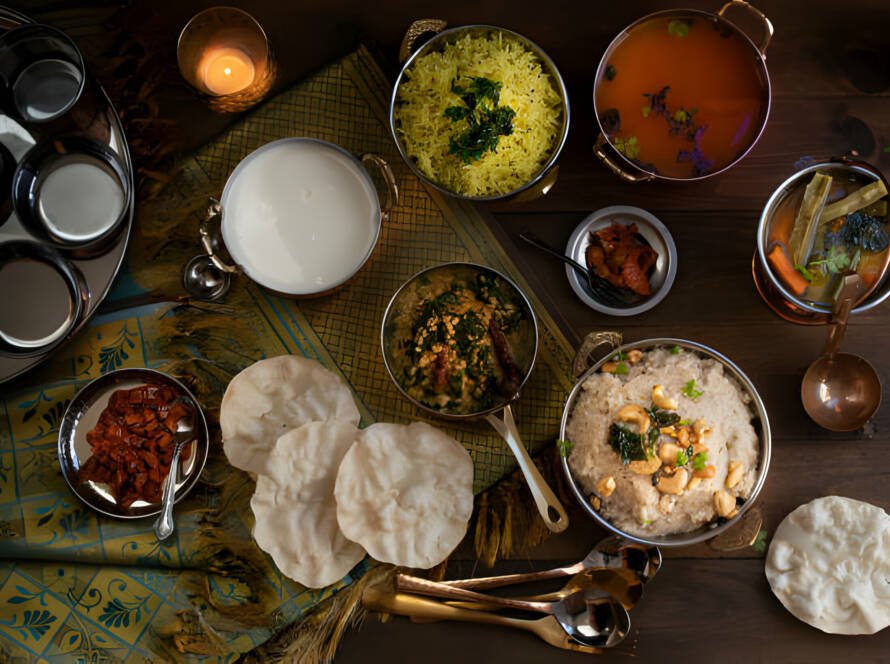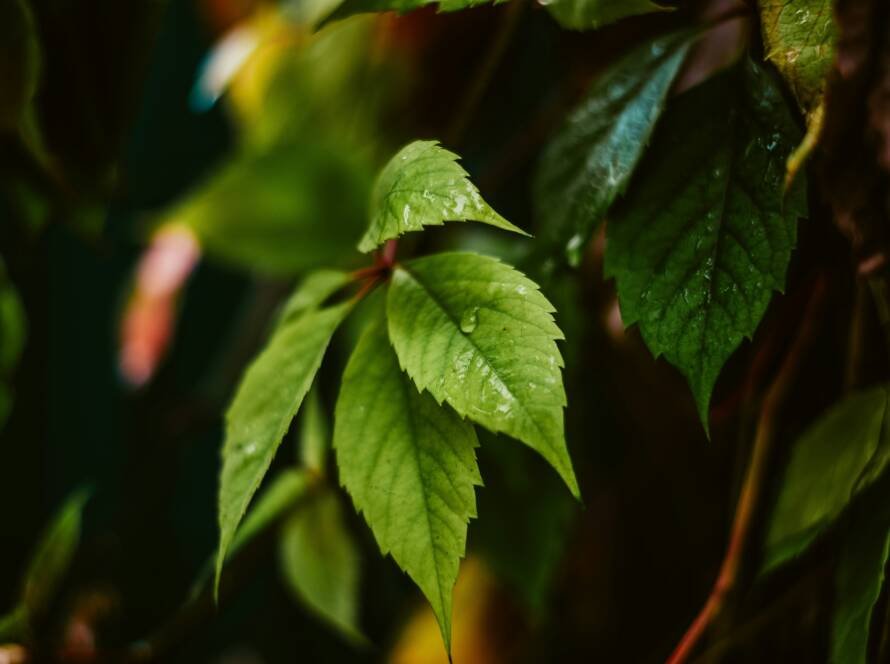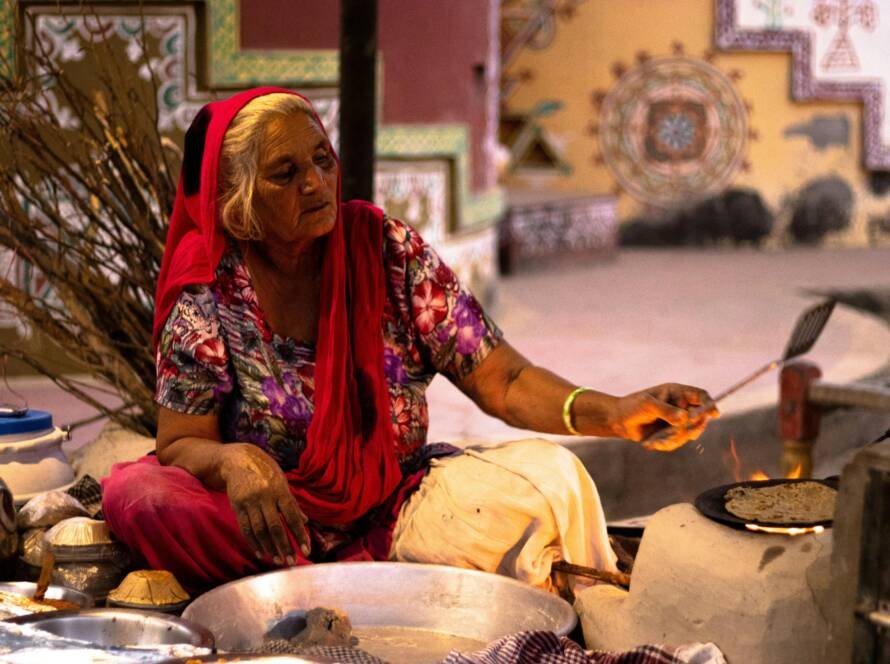A Taste of Celebration: Memories on the Palate
There is a particular warmth in the air when festival aromas drift from kitchens: the honeyed scent of laddus cooling on brass plates, the spicy whisper of murukku being shaped by gentle fingers, the sweet hiss of jaggery melting into puran poli. These scents carry us home—to childhood laughter, to lantern-lit courtyards, to tables heavy with blessing. In every region, festive foods are living memories made edible, inviting us to taste joy, devotion, and belonging.
Sweets of Celebration: The Language of Joy
From Diwali’s golden gulab jamuns to Eid’s flaky sheer-korma, sweets speak a universal language: one of abundance, of sharing, of hearts opening. In Maharashtra, shrikhand shoulders the dawn of Gudi Padwa with saffron-streaked cream; in Bengal, rosogolla greets Durga with spongy sweetness soaked in fragrant syrup.
These confections are more than sugar and spice—they are symbols of triumph over darkness, of hope and generosity. As families pass ladles of syruped balls or fold parcels of sesame-jaggery til-gul, they pass on stories of resilience, legends of goddesses, and wishes for joy.
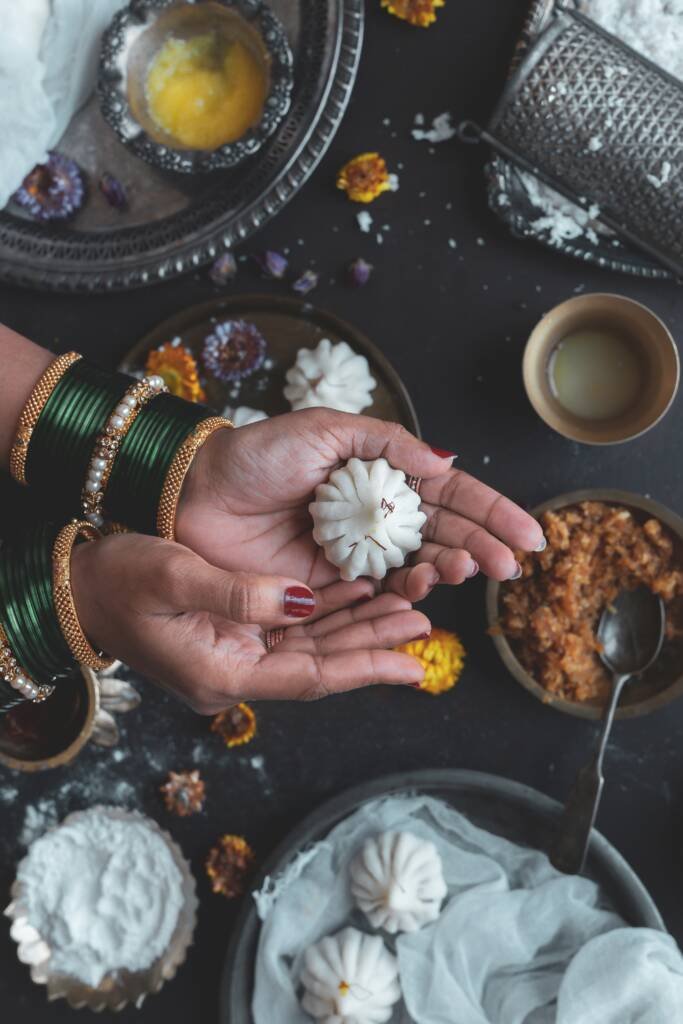
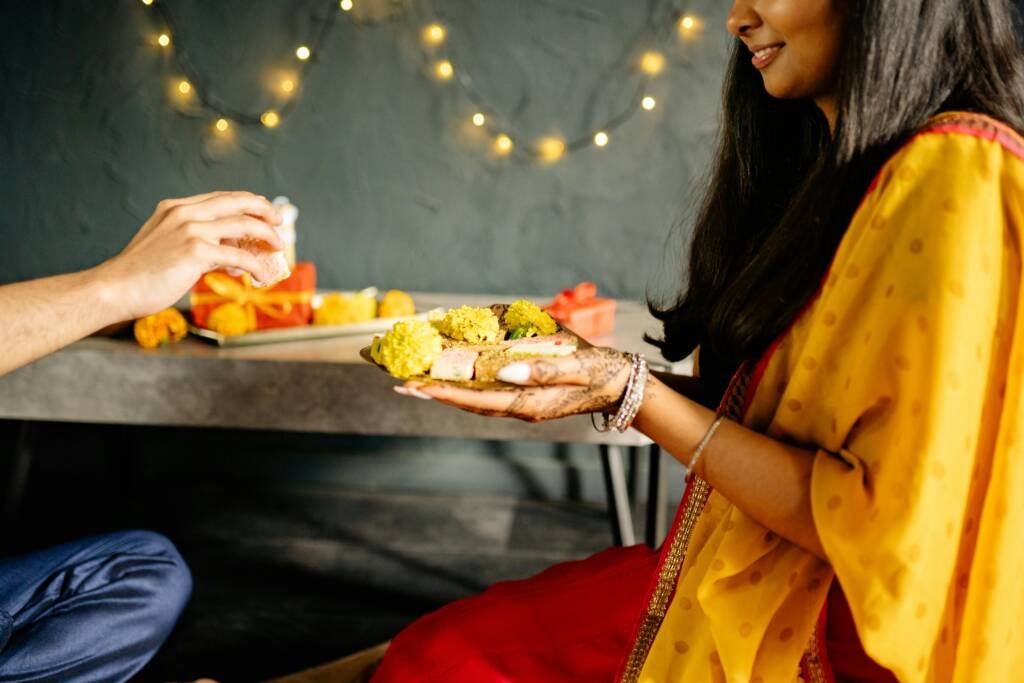
Savory Feasts of Ritual: Feasting with Intention
Alongside sweets, savory dishes anchor festivals in earthy tradition. On Pongal morning, earthen pots bubble over with rice and lentils in fresh turmeric water—a gesture of gratitude to the harvest sun. During Navratri, homes serve sabudana khichdi, its pearls of tapioca offering gentle sustenance during fasting, each morsel a reminder of inner purity.
Across Gujarat, homes pour tangy farali dhokla for Janmashtami, honoring Krishna’s playful spirit. In Tamil Nadu, the nine-course Sadya of Onam unfolds on banana leaves—rice surrounded by artful piles of avial, erissery, and olan, each dish a taste of the monsoon’s bounty and King Mahabali’s welcome.
Savory festival dishes teach patience, gratitude, and the art of mindful eating—reminding us that every grain has a story, every spice a purpose.
Symbolism on the Plate: Weaving Philosophy into Flavor
Festive foods are not accidental; they are deliberate symbols. The roundness of a modak for Ganesh represents fullness of spirit; the fiery red of sindoor-laden poori at Holi mirrors the riot of colors in celebration. A pinch of saffron in celebratory kheer signifies luxury offered to the divine; a sprinkle of sesame on Makar Sankranti sweets stands for immortality and warmth in winter’s cusp.
Each ingredient is chosen not only for taste but for meaning—a culinary philosophy that turns eating into an act of meditation and connection.
Timeless Resonance: Why We Feast Together
In a world of fast meals and fleeting moments, festival cooking anchors us. It reminds us that food is a communal heartbeat, a ritual that stitches generations together. As kitchens fill with song and spice, we reawaken roots: the soil that nurtures our crops, the hands that knead our dough, the faith that guides our gatherings.
Festive foods endure because they feed more than hunger—they nourish identity, continuity, and gratitude. They celebrate life’s cycles: birth, harvest, renewal.
Carrying the Feast Forward
May the sweetness of jalebi, the warmth of makki ki roti, and the savor of pheeni linger not only on your tongue but in your heart. May every festival table you gather at be a space of welcome, of shared stories and hushed blessings.
In honoring these foods, we honor our ancestors, our land, and our shared humanity. And in each prepared dish, we kindle the timeless flame of celebration—one that feeds our souls long after the last bite.
In the simple act of eating together, India’s festive spirit comes alive—reminding us that culture, like flavor, is best when savored in good company.

